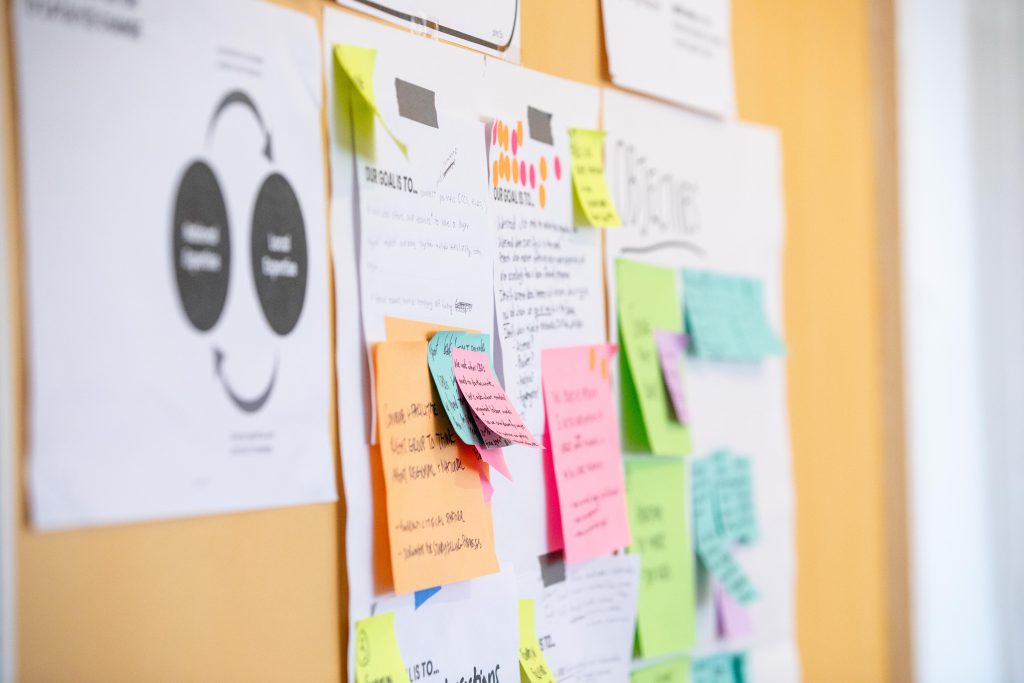
What an exciting month to kick off my new role as CEO at IMT! After launching our new strategy earlier this year, our team has been excited to pivot from planning to implementation on some major projects, and to do so in a way that continues to center people throughout our equitable decarbonization efforts. IMT kicked off our BuildUp2030 plan for the decade in 2020, and recently updated this strategy for the next three years based on lessons learned and shifts in how our partner communities, governments, and businesses are pursuing climate solutions around buildings.
As we close in on the midway point in the decade, I am seeing some consistent themes that emerged in our planning process grounding our work ahead. The first of these is the need to work at scale, and to understand the differences between scaling up, scaling out, and scaling deep. The second is to act at the intersection of a complex set of challenges—and a broad range of perspectives—related to the built environment and climate change.
Scaling Up, Scaling Out, Scaling Deep
Our focus can’t be exclusively on replicating our past innovations—aka ‘scaling out’. Not everything that works in D.C. will work in St. Louis, and we want to ‘scale deep’ by doing the intentional, place-based relationship building that leads to better collaboration, shifting power dynamics, and alignment on values and beliefs between all of our partners. That is how we co-develop solutions that motivate and sustain diverse coalitions of people.
This deep level of scale will be a source of learning from which to ‘scale up’. We will incorporate these lessons into model policies, implementation programs, and approaches that drive demand for high-performance buildings to ensure these solutions can be localized. That also means participating in coalitions that change the institutions, regulations, and laws that govern buildings where we don’t directly work.

In the past few weeks, we have been digging in on the historic launch of the EPA’s Greenhouse Gas Reduction Fund (GGRF). It will permanently shift the landscape for building retrofits by deploying $20 billion to support improvements to housing and community priority buildings for low-income and disadvantaged communities. GGRF scales up by providing an unprecedented level of capital to improve buildings, scales out by engaging new partners who have not previously engaged in building decarbonization, and scales deep by building capacity with CDFIs and community banks to support the shift to healthy, efficient buildings and a low-carbon economy.
This is the level of investment that we need to tackle the effects of the climate crisis, and IMT is ready to meet the moment. We are proud to be a part of a winning bid team led by the Justice Climate Fund, and as more details solidify about how we will advance solutions, we will share! In addition, IMT is excited to support the development of principles, standards, and guidance for GGRF awardees that will create clarity, reduce barriers to access, and protect the people and communities the program intends to benefit.
Complex Challenges
Buildings are a fascinating part of the climate puzzle as they often sit at the intersection of many inequities in our society. It’s not just about decarbonization—it’s also about co-creating solutions that address housing affordability, energy justice, resiliency to increasingly damaging weather events, and systemic racism in our infrastructure.
For the past two years, we have co-led the Community Climate Shift initiative with People’s Climate Innovation Center, which is focused on place-based capacity building that supports holistic climate action at the local level in several communities, and across a national partner network. Initial Community Climate Shift projects in San Francisco, Orlando, New Jersey, and Philadelphia focus on energy burden, housing repair, and electrification programs, as well as alignment with comprehensive building performance policies, that will accelerate the pace of decarbonization.

Since 2020, IMT has co-led the Building Performance Partnership, a growing national network of organizations that align training, resources, and develop a local community of practice to support building upgrades that align immediate community priorities with longer term decarbonization goals. The Partnership includes IMT’s own DC Building Innovation Hub, as well as counterparts in Chicago, New York City, Kansas City, and St. Louis.
We are grounded in these local initiatives, and encouraged by increased federal guidance that will help us make the case for continuing our work. For example, the Department of Energy’s National Blueprint for Building Decarbonization that was just published in early April lays out the pathways for building improvements that support decarbonization by 2050. The Blueprint is an affirmation of IMT’s cross-cutting goals of energy justice, affordability, and resilience.
In the months ahead our team will be busy working to strengthen the coalitions that are moving from pilots to broad scale including Community Climate Shift and the Building Performance Partnership. We will also remain focused on leveraging historic federal investments in community centered climate action, which requires sustained support for the movement infrastructure that makes this work possible. When you’re working through so many overlapping issues, with more and more people and organizations every day, challenges and conflicts are inevitable. It doesn’t mean our work is doomed. Persistence is absolutely key, and by constantly inviting new people in, each with their own lived experiences around the climate crisis, we are building an unstoppable movement.
